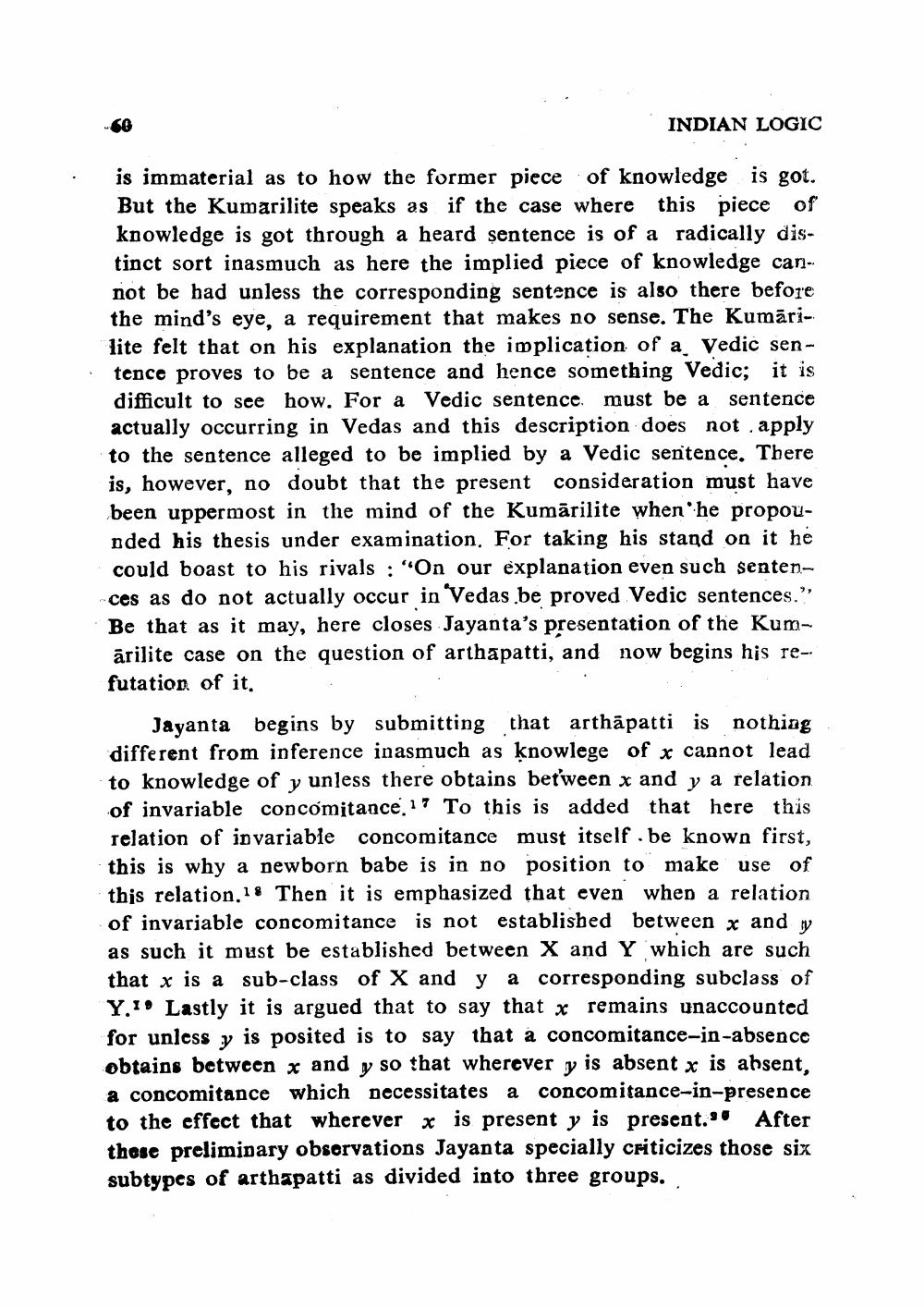________________
INDIAN LOGIC
is immaterial as to how the former piece of knowledge is got. But the Kumarilite speaks as if the case where this piece of knowledge is got through a heard sentence is of a radically distinct sort inasmuch as here the implied piece of knowledge cannot be had unless the corresponding sentence is also there before the mind's eye, a requirement that makes no sense. The Kumārilite felt that on his explanation the implication of a Vedic s tence proves to be a sentence and hence something Vedic; it is difficult to see how. For a Vedic sentence must be a sentence actually occurring in Vedas and this description does not apply to the sentence alleged to be implied by a Vedic sentence. There is, however, no doubt that the present consideration must have been uppermost in the mind of the Kumārilite when he propounded his thesis under examination. For taking his stand on it he could boast to his rivals : "On our explanation even such sentences as do not actually occur in Vedas be proved Vedic sentences.” Be that as it may, here closes Jayanta's presentation of the Kumärilite case on the question of arthapatti, and now begins his refutation of it,
Jayanta begins by submitting that arthāpatti is nothing different from inference inasmuch as knowlege of x cannot lead to knowledge of y unless there obtains between x and y a relation of invariable concomitance. 17 To this is added that here this relation of invariable concomitance must itself. be known first, this is why a newborn babe is in no position to make use of this relation.18 Then it is emphasized that even when a relation of invariable concomitance is not established between x and my as such it must be established between X and Y which are such that x is a sub-class of X and ya corresponding subclass of Y.I. Lastly it is argued that to say that x remains unaccounted for unless y is posited is to say that a concomitance-in-absence obtains between x and y so that wherever yy is absent x is absent, a concomitance which necessitates a concomitance-in-presence to the effect that wherever x is present y is present. After those preliminary observations Jayanta specially criticizes those six subtypes of arthapatti as divided into three groups.




